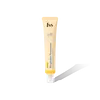What's inside
What's inside
 Key Ingredients
Key Ingredients

 Benefits
Benefits

 Concerns
Concerns

No concerns
 Ingredients Side-by-side
Ingredients Side-by-side

Water
Skin ConditioningZinc Oxide
Cosmetic ColorantTitanium Dioxide
Cosmetic ColorantGlycerin
HumectantHydroxyethyl Acrylate/Sodium Acryloyldimethyl Taurate Copolymer
Emulsion StabilisingAloe Ferox Leaf Juice Extract
Skin ConditioningAcrylates/Polytrimethylsiloxymethacrylate Copolymer
Skin ConditioningPolyquaternium-7
Propanediol
SolventIsohexadecane
EmollientSodium Hyaluronate
HumectantCeramide NP
Skin ConditioningChlorphenesin
AntimicrobialPolysorbate 60
EmulsifyingAcrylates Crosspolymer
AbsorbentPhenoxyethanol
PreservativeAllantoin
Skin ConditioningPanthenol
Skin ConditioningLaureth-1 Phosphate
Ectoin
Skin ConditioningPotassium Hydroxide
BufferingWater, Zinc Oxide, Titanium Dioxide, Glycerin, Hydroxyethyl Acrylate/Sodium Acryloyldimethyl Taurate Copolymer, Aloe Ferox Leaf Juice Extract, Acrylates/Polytrimethylsiloxymethacrylate Copolymer, Polyquaternium-7, Propanediol, Isohexadecane, Sodium Hyaluronate, Ceramide NP, Chlorphenesin, Polysorbate 60, Acrylates Crosspolymer, Phenoxyethanol, Allantoin, Panthenol, Laureth-1 Phosphate, Ectoin, Potassium Hydroxide
Water
Skin ConditioningDibutyl Adipate
EmollientC12-15 Alkyl Benzoate
AntimicrobialDiethylamino Hydroxybenzoyl Hexyl Benzoate
UV FilterPolysilicone-15
UV FilterPolyglyceryl-6 Stearate
EmollientGlycerin
HumectantNiacinamide
SmoothingPortulaca Oleracea Extract
Skin ConditioningSilica
AbrasiveMethylene Bis-Benzotriazolyl Tetramethylbutylphenol
UV FilterBis-Ethylhexyloxyphenol Methoxyphenyl Triazine
Skin ConditioningEthylhexyl Triazone
UV AbsorberSynthetic Fluorphlogopite
Centella Asiatica Extract
CleansingStearyl Alcohol
EmollientPanthenol
Skin ConditioningDipropylene Glycol
HumectantGlyceryl Stearate
EmollientPolyglyceryl-6 Behenate
Emulsion StabilisingHydroxyacetophenone
AntioxidantDecyl Glucoside
CleansingAcrylates/C10-30 Alkyl Acrylate Crosspolymer
Emulsion StabilisingTromethamine
BufferingCaprylyl Glycol
EmollientAllantoin
Skin ConditioningButylene Glycol
HumectantAdenosine
Skin ConditioningDisodium EDTA
Xanthan Gum
Emulsifying1,2-Hexanediol
Skin ConditioningDipotassium Glycyrrhizate
HumectantWater, Dibutyl Adipate, C12-15 Alkyl Benzoate, Diethylamino Hydroxybenzoyl Hexyl Benzoate, Polysilicone-15, Polyglyceryl-6 Stearate, Glycerin, Niacinamide, Portulaca Oleracea Extract, Silica, Methylene Bis-Benzotriazolyl Tetramethylbutylphenol, Bis-Ethylhexyloxyphenol Methoxyphenyl Triazine, Ethylhexyl Triazone, Synthetic Fluorphlogopite, Centella Asiatica Extract, Stearyl Alcohol, Panthenol, Dipropylene Glycol, Glyceryl Stearate, Polyglyceryl-6 Behenate, Hydroxyacetophenone, Decyl Glucoside, Acrylates/C10-30 Alkyl Acrylate Crosspolymer, Tromethamine, Caprylyl Glycol, Allantoin, Butylene Glycol, Adenosine, Disodium EDTA, Xanthan Gum, 1,2-Hexanediol, Dipotassium Glycyrrhizate
 Reviews
Reviews

Ingredients Explained
These ingredients are found in both products.
Ingredients higher up in an ingredient list are typically present in a larger amount.
Allantoin is a soothing ingredient known for its protective and moisturizingg properties. Because of this, it is often added to products with strong active ingredients.
Studies show higher concentrations of this ingredient can promote wound healing.
Though it can be derived from the comfrey plant, allantoin is produced synthetically for cosmetic products to ensure purity.
Learn more about AllantoinGlycerin is already naturally found in your skin. It helps moisturize and protect your skin.
A study from 2016 found glycerin to be more effective as a humectant than AHAs and hyaluronic acid.
As a humectant, it helps the skin stay hydrated by pulling moisture to your skin. The low molecular weight of glycerin allows it to pull moisture into the deeper layers of your skin.
Hydrated skin improves your skin barrier; Your skin barrier helps protect against irritants and bacteria.
Glycerin has also been found to have antimicrobial and antiviral properties. Due to these properties, glycerin is often used in wound and burn treatments.
In cosmetics, glycerin is usually derived from plants such as soybean or palm. However, it can also be sourced from animals, such as tallow or animal fat.
This ingredient is organic, colorless, odorless, and non-toxic.
Glycerin is the name for this ingredient in American English. British English uses Glycerol/Glycerine.
Learn more about GlycerinPanthenol is a common ingredient that helps hydrate and soothe the skin. It is found naturally in our skin and hair.
There are two forms of panthenol: D and L.
D-panthenol is also known as dexpanthenol. Most cosmetics use dexpanthenol or a mixture of D and L-panthenol.
Panthenol is famous due to its ability to go deeper into the skin's layers. Using this ingredient has numerous pros (and no cons):
Like hyaluronic acid, panthenol is a humectant. Humectants are able to bind and hold large amounts of water to keep skin hydrated.
This ingredient works well for wound healing. It works by increasing tissue in the wound and helps close open wounds.
Once oxidized, panthenol converts to pantothenic acid. Panthothenic acid is found in all living cells.
This ingredient is also referred to as pro-vitamin B5.
Learn more about PanthenolWater. It's the most common cosmetic ingredient of all. You'll usually see it at the top of ingredient lists, meaning that it makes up the largest part of the product.
So why is it so popular? Water most often acts as a solvent - this means that it helps dissolve other ingredients into the formulation.
You'll also recognize water as that liquid we all need to stay alive. If you see this, drink a glass of water. Stay hydrated!
Learn more about Water